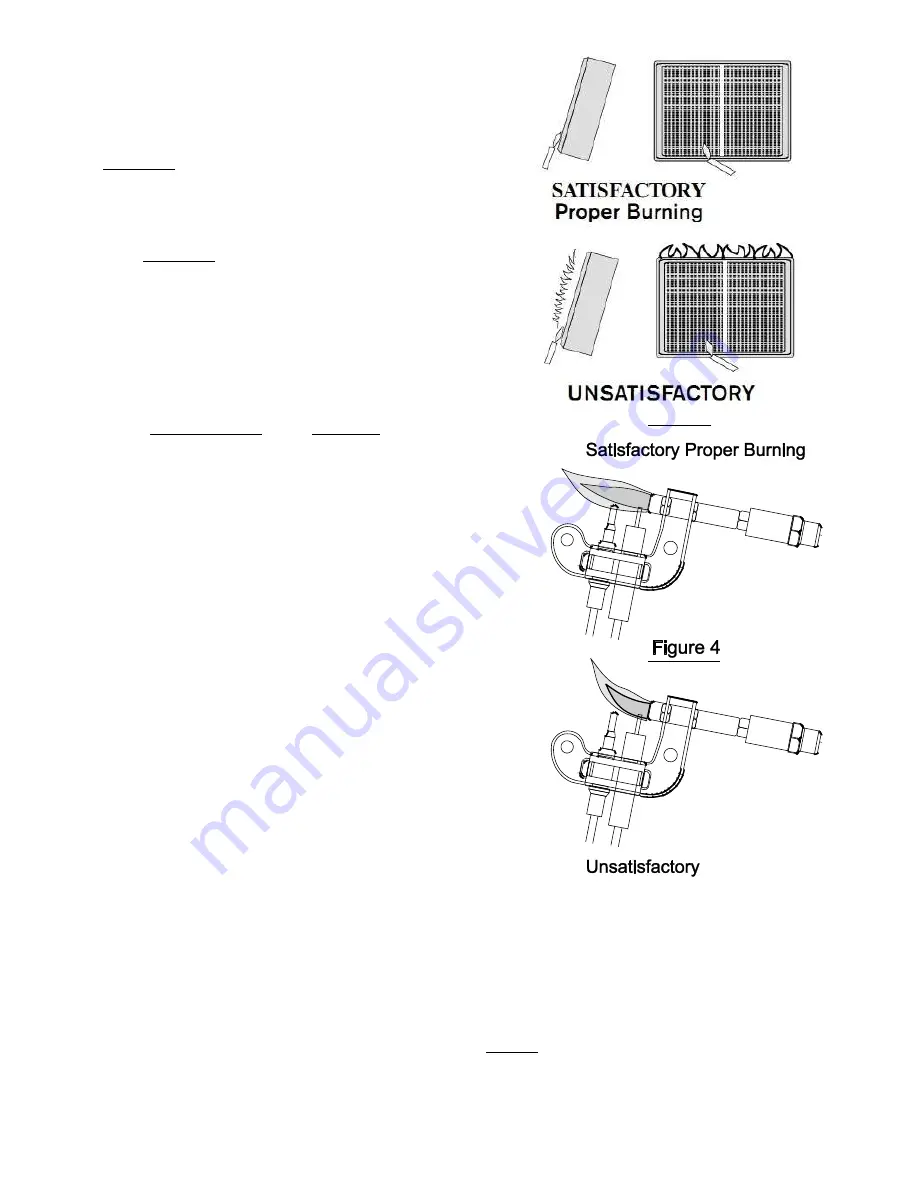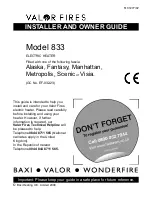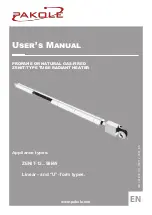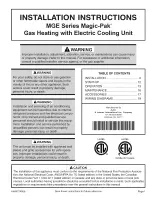
-7-
INSTALLATION TO GAS SUPPLY
1. The gas supply must comply with local codes, or in their
absence, the installation must be in accordance with the
American National Standard (National Fuel Gas Code) NFPA
54, also known as ANSI Z223.1 - latest edition, available
from the ANSI, Inc., 1434 Broadway, New York, New York
10018, or the National Fire Protection Association,
Batterymarch Park, Quincy, MA 02269.
2.
WARNING:
When using LP gas, this heater requires an
external regulator (not supplied) located between the heater
and LP Supply Tank. This regulator must be supplied by the
installer to reduce incoming LP Gas pressure to a maximum
of 14 inches of water column. Under no circumstances
should this heater ever be hooked directly to an LP supply
tank.
IMPORTANT:
The Pressure Regulator must be held
with a wrench when connecting gas piping and/or fittings to
the Pressure Regulator.
3. Use only new, black iron or rust resistant steel pipe. Copper
tubing may be acceptable in certain areas.
CHECK LOCAL
CODES TO DETERMINE ACCEPTABLE TYPES OF GAS
PIPING.
4. The gas supply line shall be sized and installed to provide a
sufficient supply of gas to meet the minimum demand of
the heater without undue loss of pressure.
Typical Installation
Supply Line
Up to 20,000 Btu/hr
3/8" or greater
Up to 30,000 Btu/hr
1/2" or greater
5. The sealant used on the threaded pipe joints of the gas pipe
must be the specific type resistant to the action of Liquid
Petroleum Gas. Apply sealant lightly to male threads to
ensure excess sealant does not enter lines. Any excess
sealant could be forced into the pipe and result in clogged
gas valves.
6. The supply system must include a manual shut-off valve, a
union in the line, and a plugged 1/8" NPT tap. The tap
should be accessible for test gauge connections upstream of
the gas supply connection to heater.
7. Include a drip leg (trap) in the supply line. The purpose of
the drip leg is to prevent moisture and contaminants in the
gas supply from entering the heater controls. The drip leg
should be readily accessible to permit cleaning or emptying.
A drip leg should not be located where the condensate is
likely to freeze. Failure to use a drip leg can result in
operational difficulties in the heater.
GAS SUPPLY CHECK
A union must be provided directly at the gas inlet to the heater.
A manual gas valve must be provided upstream of the union.
This will allow you to shut off the gas supply to the heater if it is
necessary to remove it for service purposes.
The appliance and its appliance main shutoff valve must be
disconnected from the gas supply piping system during any
pressure testing of that system at test pressures in excess of
1/2 psig. (3.45kPa).
The appliance must be isolated from the gas supply piping
system by closing its equipment shutoff valve during any
pressure testing of the gas supply piping system at test pressures
equal to or less than 1/2 psig. (3.45kPa).
The connectors must be checked and cleaned before assembling
and then wrenched up tight for a gas tight connection. Apply a
soap and water solution to all joints and watch for bubbles to
check for gas leaks.
NEVER USE ANY OPEN FLAME TO CHECK
FOR GAS LEAKS.
HEATER MAINTENANCE - PERIODIC VISUAL CHECK
The burner must glow evenly over the entire surface when
operating correctly. The pilot flame must burn with a clear blue
flame. See Figures 3 and 4.
HEATER SERVICE
To service the heater, turn off the gas supply and disconnect the
gas piping at the union. Unscrew the two screws located in the
lower front part of the unit. By sliding the panels upwards and
toward the front, the functional elements of the unit are
uncovered.
Periodic cleaning of the unit is required. Dust the surface of the
unit and vacuum clean burner surfaces and the control
compartment.
BURNER
If this heater has an optional blower, disconnect the electrical
connection before servicing the heater (e.g., unplug the blower).
Keep the heater area clear and free from combustible materials,
gasoline and other flammable vapors and liquids.
Figure 3


































